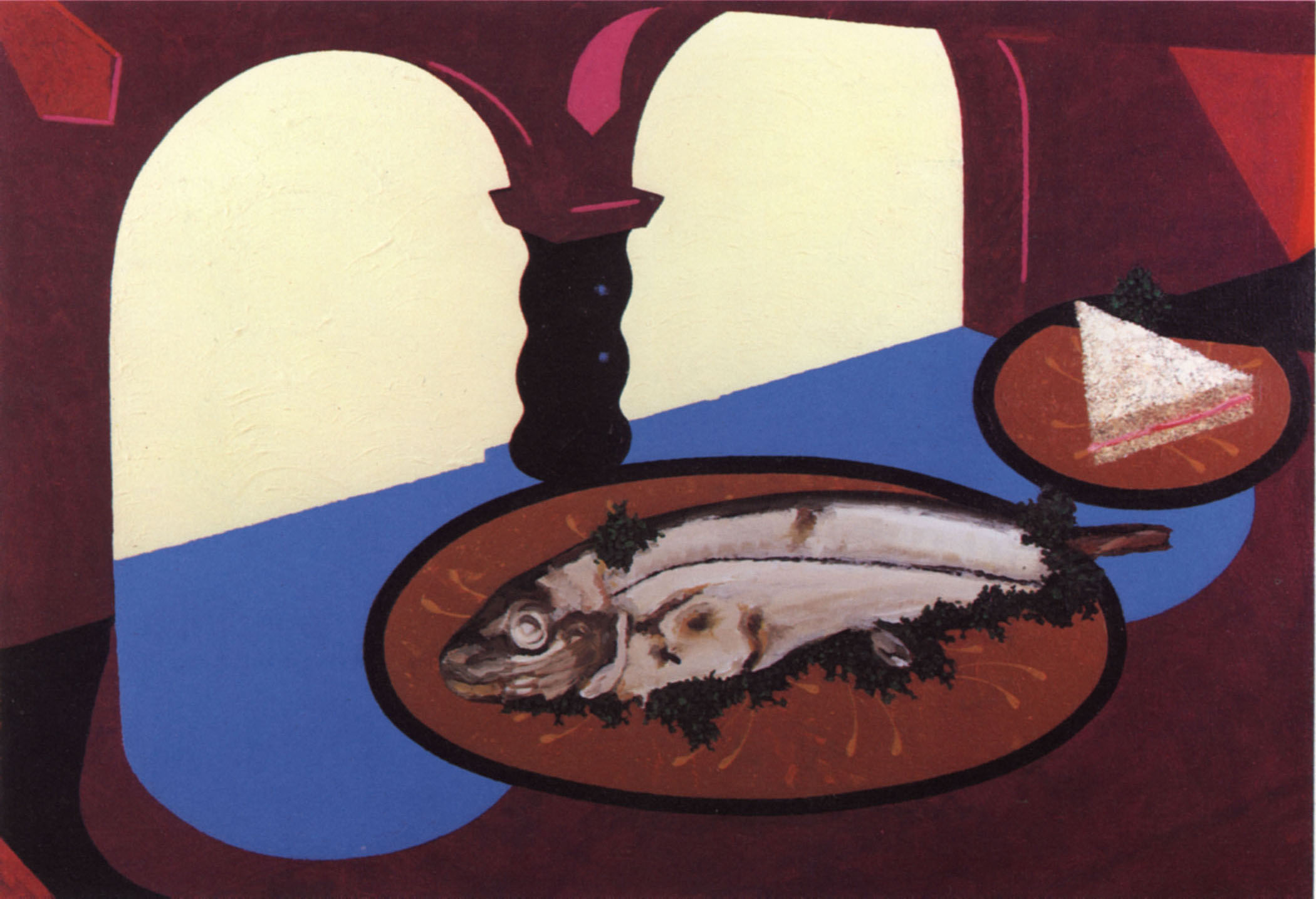Today being the first day of British Sandwich Week (“events include the Total Sandwich Show and the British Sandwich Association Dinner and Awards”) this week’s choice of picture is Patrick Caulfield’s Fish and Sandwich. One of relatively few depictions of sandwiches to be found in the canon of western art, it is also the only still life painting known to have caused a diplomatic incident.
A beautiful picture by one of the most gifted British painters, Fish and Sandwich is a thoroughly secular work of art, its setting perhaps the sideboard of some interestingly decorated ethnic restaurant in London. Yet both subject and handling communicate a vestigial sense of food as sacrament, distantly calling to mind the parable of the loaves and fishes. So it may not be entirely coincidental that the painting should have become embroiled in what was, essentially, a religious controversy. The story of how it was acquired and subsequently rejected by the British Government is a small comedy of errors and misunderstandings which shows just how important the filling of even an imaginary sandwich can be.
In 1984, while Caulfield was painting the picture, the British Embassy was being built in Saudi Arabia’s new capital city of Riyadh. The architect, Trevor Dannatt, had designed a modern-looking building and he wanted modern furniture and modern pictures to be part of it. Wendy Baron, then Head of the Government Art Collection, was asked to see what she could find.
“I was on my usual trawl through the London galleries,” she remembers, “when I suddenly saw Fish and Sandwich at Waddington’s. In dimensions and style it seemed absolutely perfect for the dining room of the new embassy. It was right in its clean lines and bold colours, and there’s even a slightly Moorish cast to the architecture in...

ITP 4: Fish and Sandwich by Patrick Caulfield
14-05-2000

